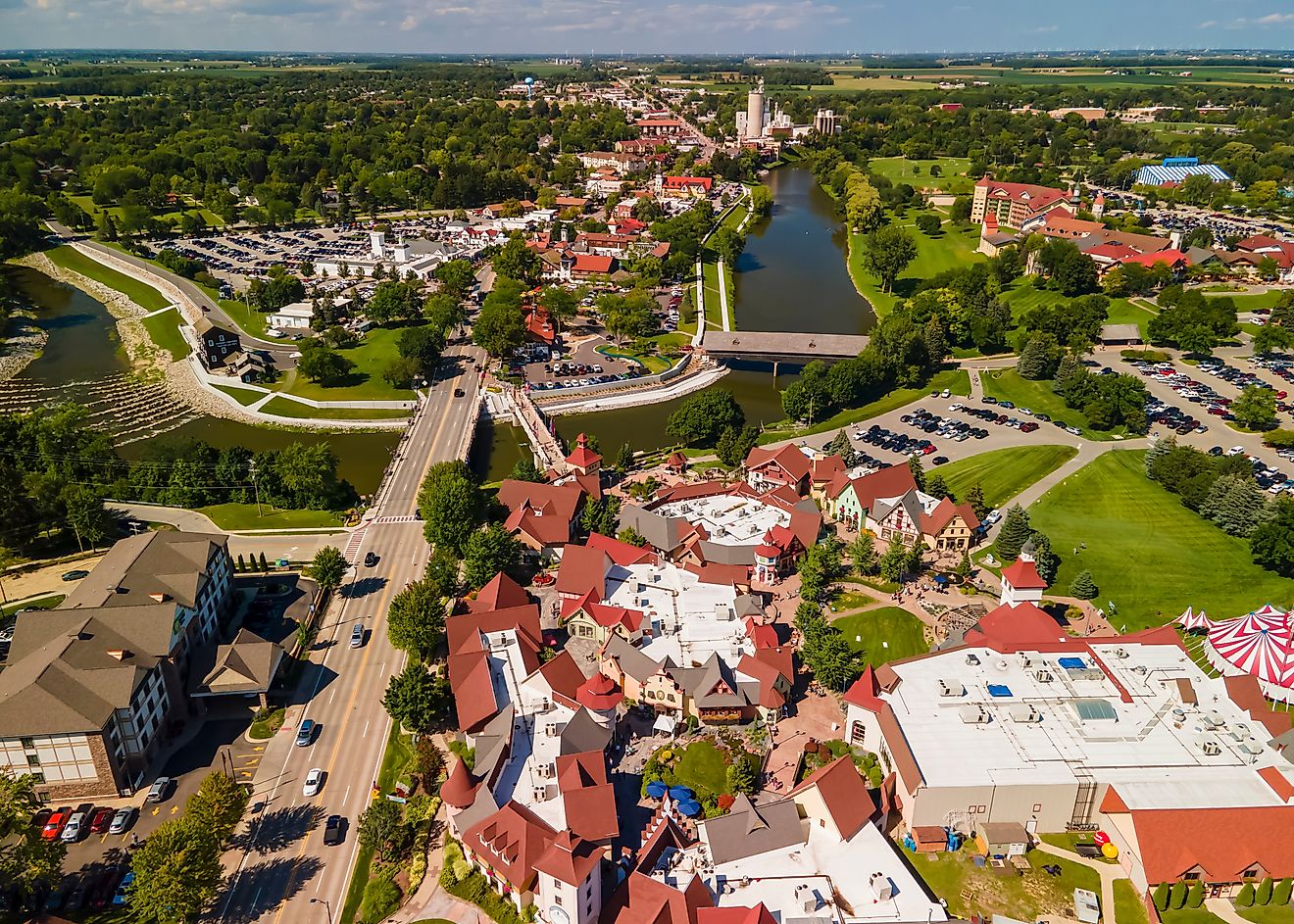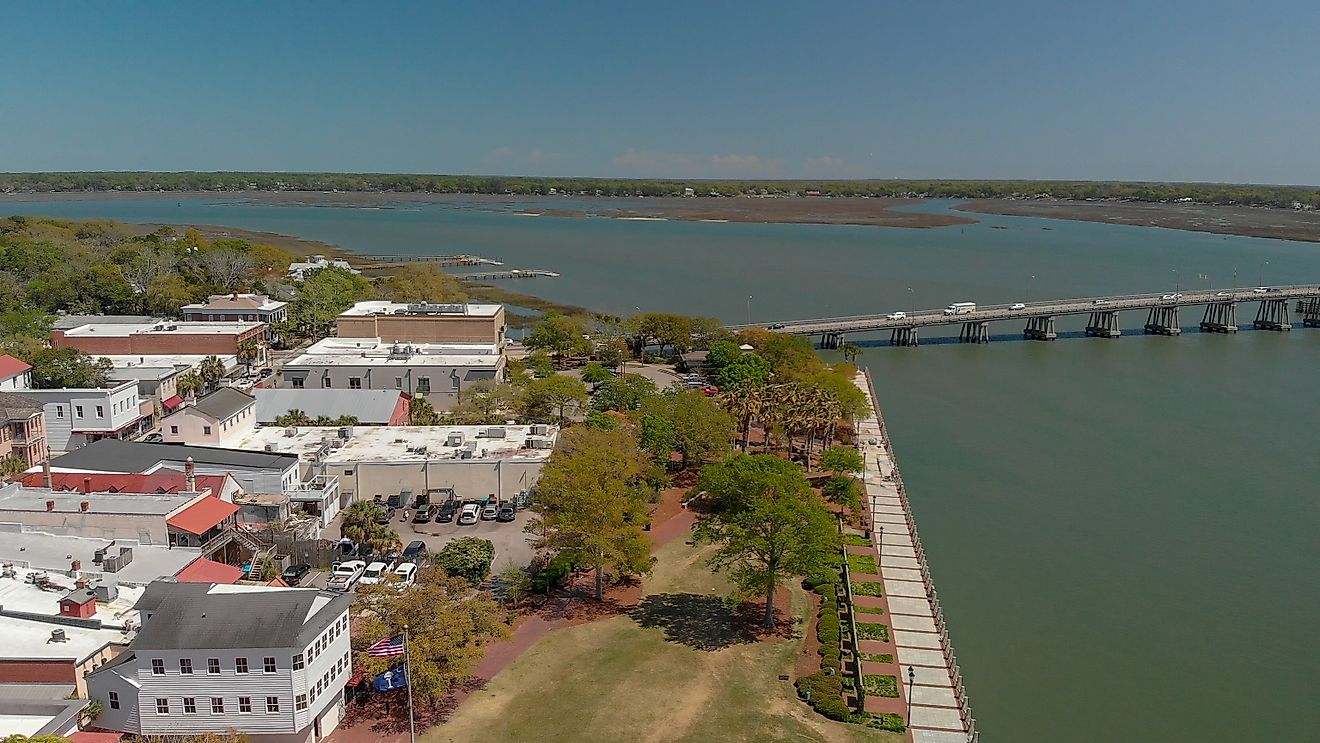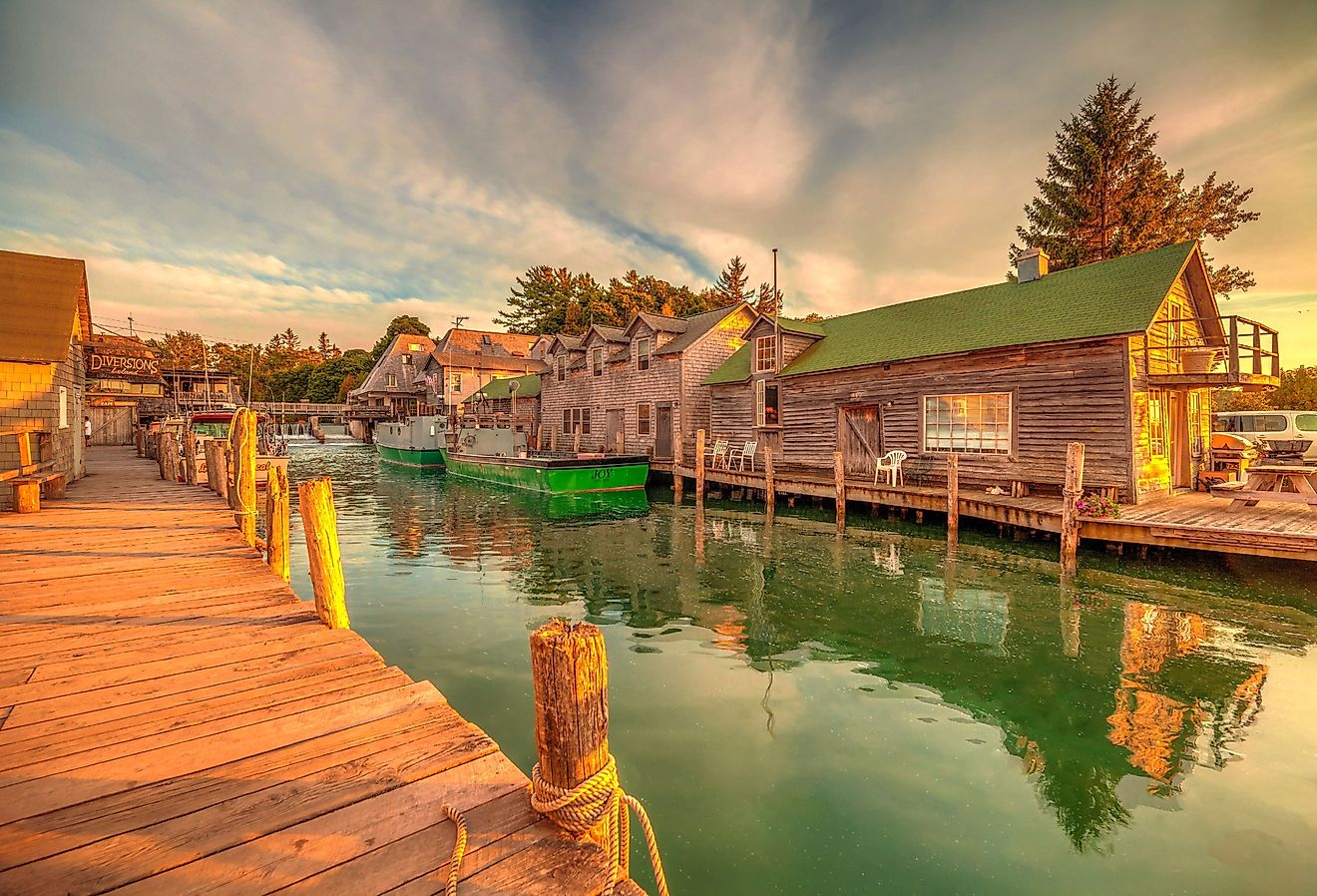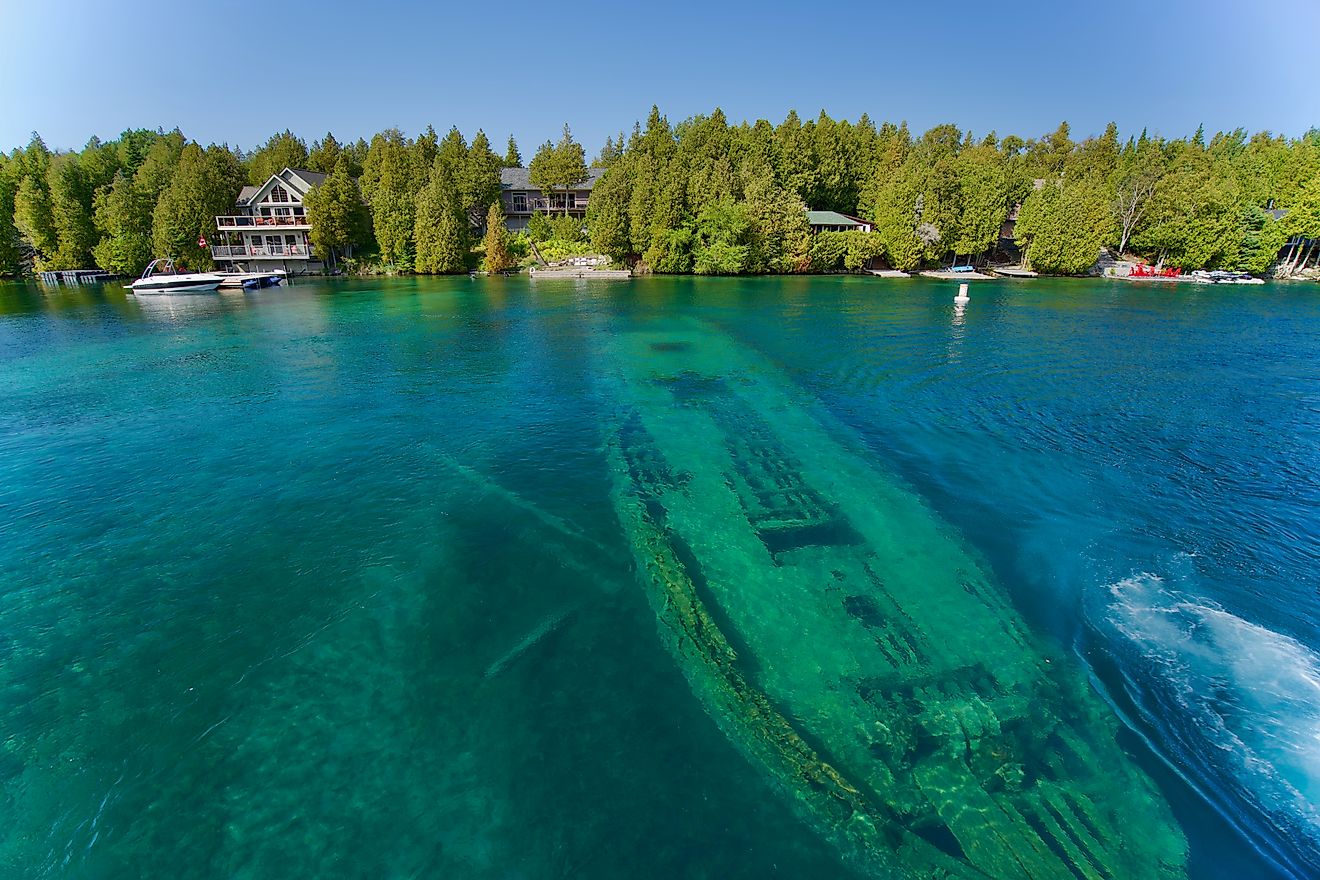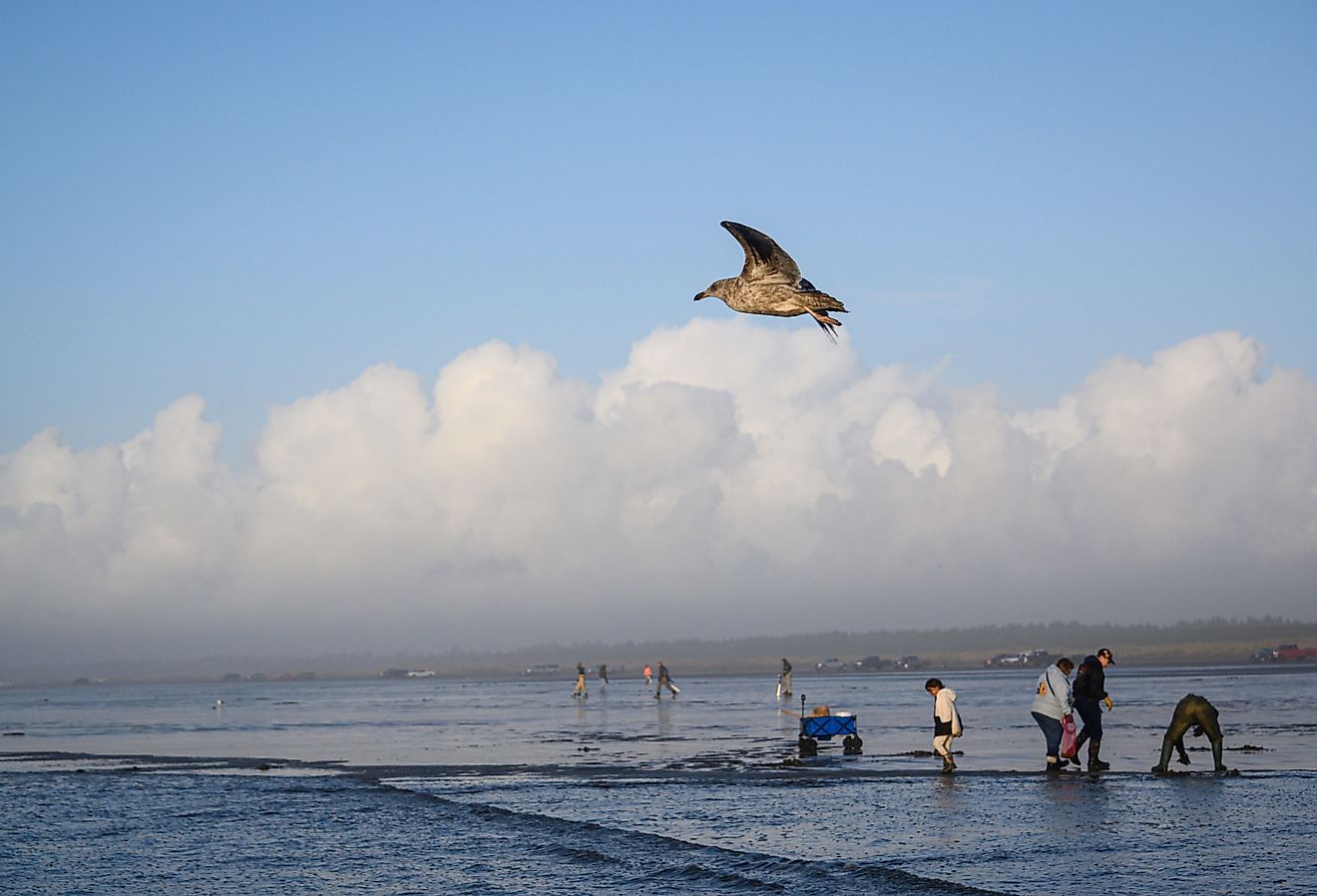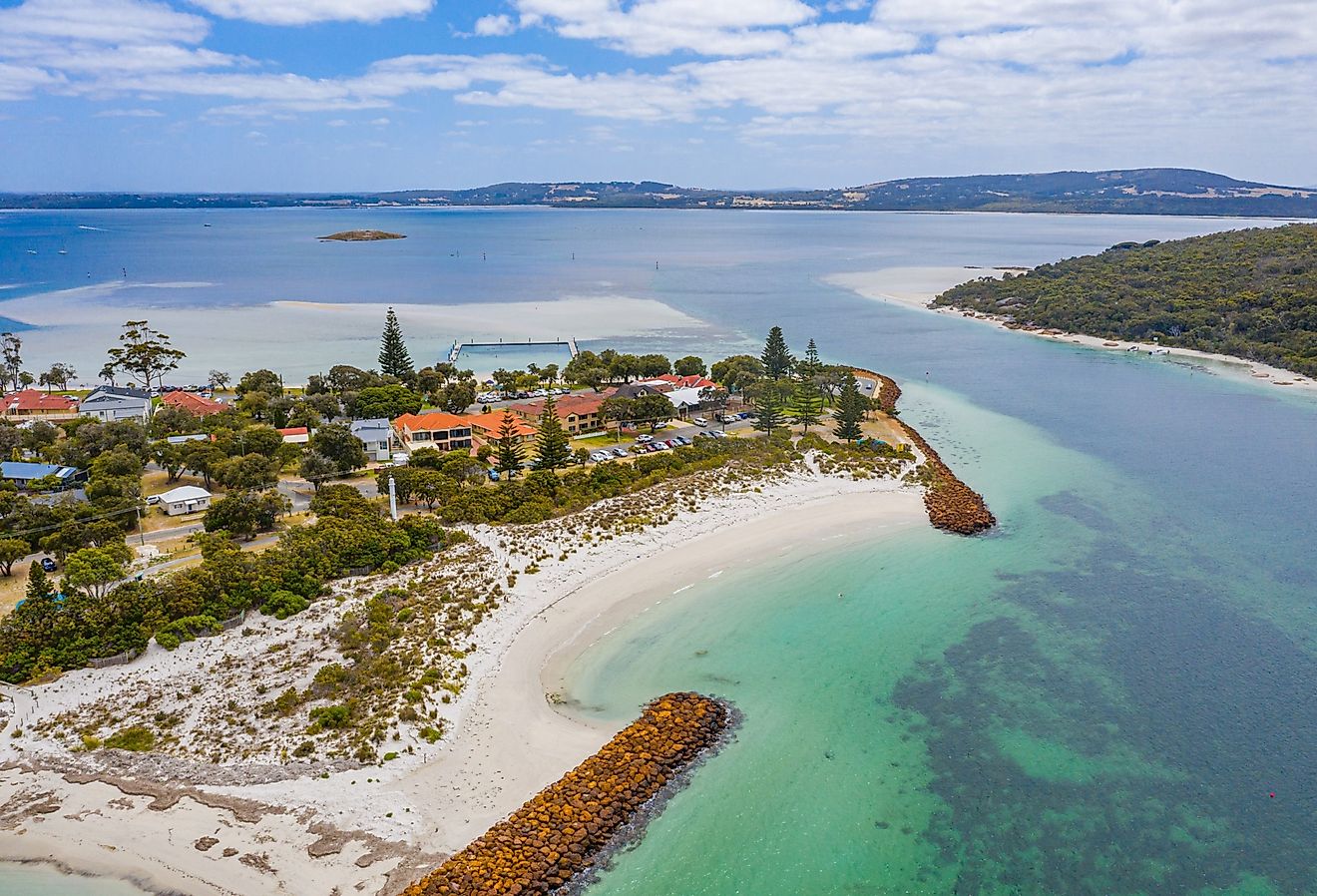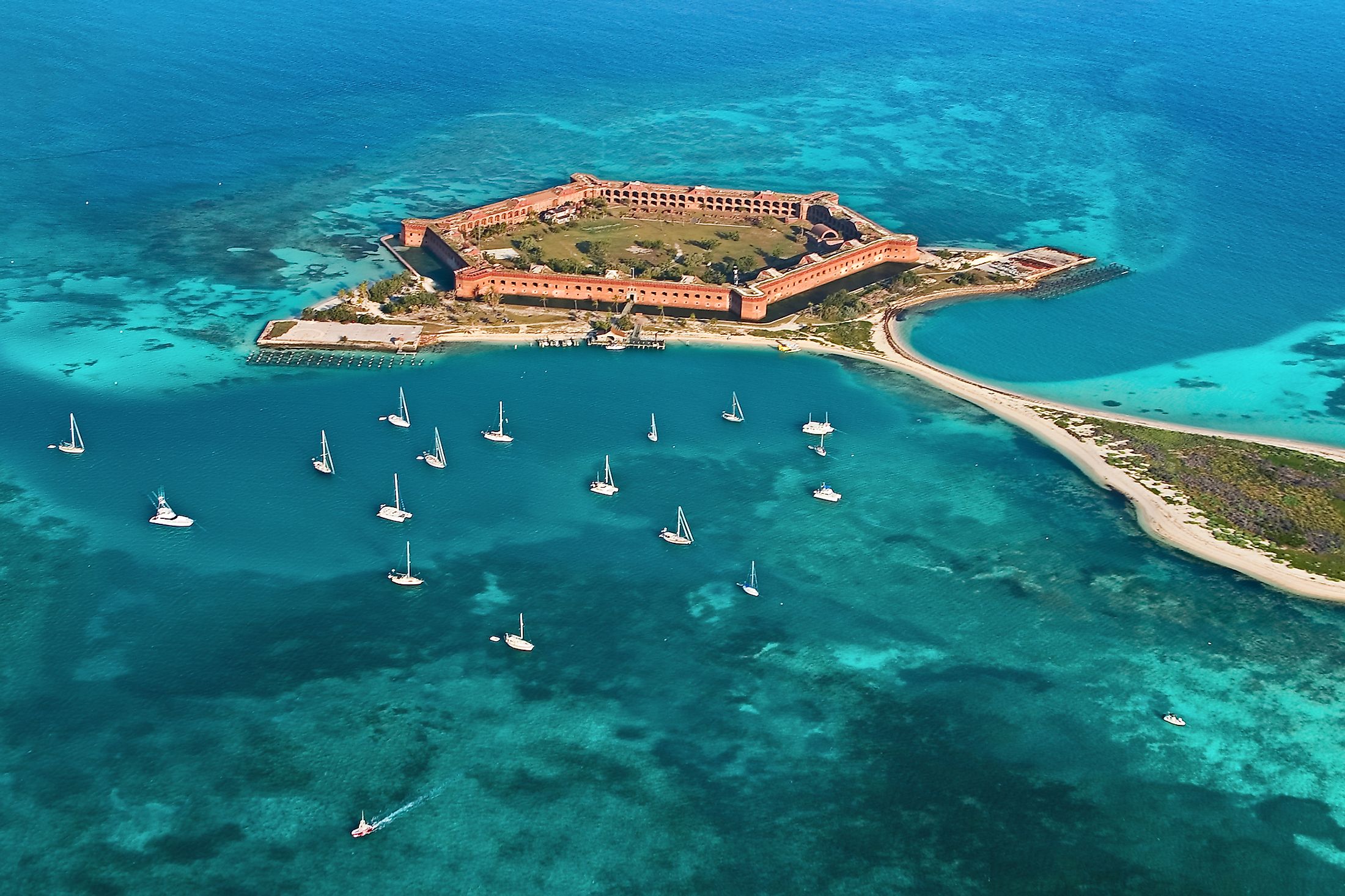
Dry Tortugas National Park
The Dry Tortugas National Park is situated in Monroe County, in the US State of Florida, about 109km to the west of the Key West in the Gulf of Mexico. The Park covers a total area of 261.84 sq. km and consists mainly of the small seven Dry Tortugas Islands, blue crystal-clear waters, and colorful coral reefs. The Park forms a part of the Everglades & Dry Tortugas Biosphere Reserve, which was designated as a UNESCO Biosphere Reserve in 1976. The Dry Tortugas National Park is only accessible by boat or seaplane.
Geography
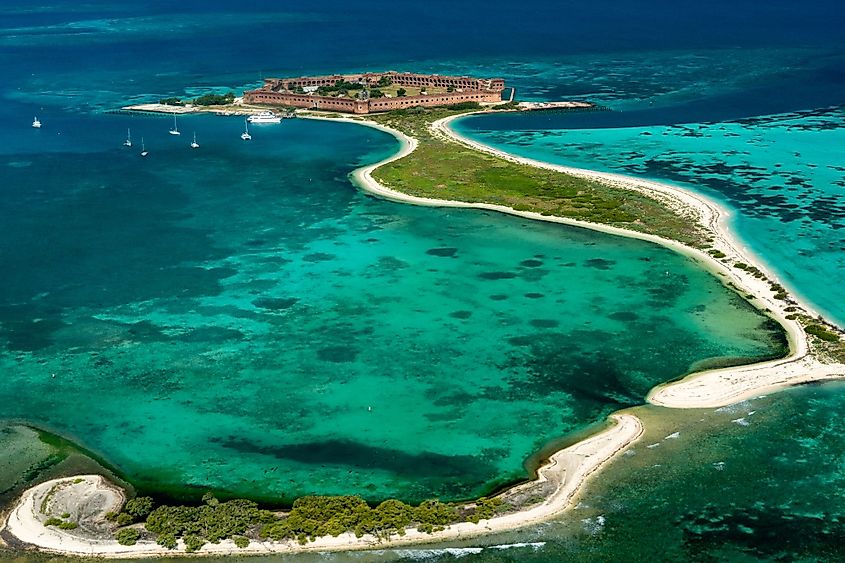
The Dry Tortugas is a small group of coral islands that represent the westernmost extent of the Florida Keys. The seven principal Dry Tortugas Islands, all of which form a part of the National Park, include the Bush Key, Garden Key, Loggerhead Key, Long Key, East Key, Hospital Key, and the Middle Key. The Dry Tortugas National Park is bordered by the Tortugas Ecological Reserve on the northwest and by the Florida Keys National Marine Sanctuary on the south, west, and east.
According to the Köppen climate classification, the Dry Tortugas National Park experiences a tropical savanna climate. The Park faces a wet rainy season beginning from May to October, which coincides with the Atlantic hurricane season, while the dry summer season extends from November to April. The average temperature in summer is about 33°C and during winter the temperature remains around 18°C. Although Dry Tortugas is occasionally exposed to tropical systems, it is considered the driest place in Florida that receives annual precipitation of about 97cm.
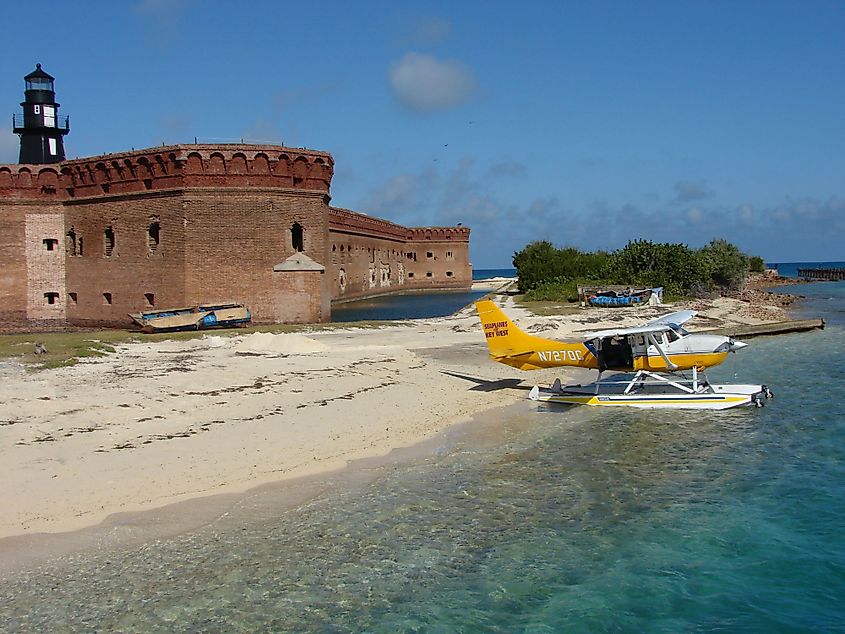
The most prominent feature of the park is Fort Jefferson, the largest 19th-century American coastal fortress, that is located on the Garden Key. The National Park is also well known for the abundant marine life, colorful coral reefs, and important breeding grounds for tropical birds. The islands and the reefs pose a serious navigational hazard to the passing ships and therefore have been a site of hundreds of shipwrecks. Although the number of visitors is quite low compared to the other National Parks, the Dry Tortugas National Park offers many recreational activities like scuba diving, snorkeling, birdwatching, kayaking, camping, saltwater fishing, etc.
Ecology
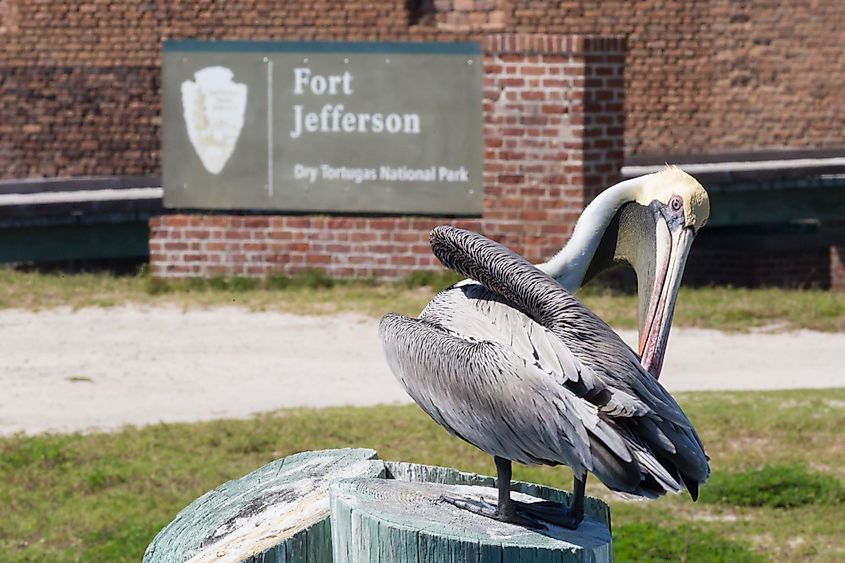
About 299 avian species have been observed in the Dry Tortugas National Park. Some of these notable avian species include the American redstart, hooded warbler, common yellowthroat, mourning dove, magnificent frigatebird, bridled tern, brown pelican, sooty tern, etc. Currently, the biggest threats faced by the islands are the spread of invasive species like agave and Casuarina trees as well as lionfish - a venomous marine fish in the waters of the park. The National Park Service has started an active eradication program to remove these invasive species.
Brief History
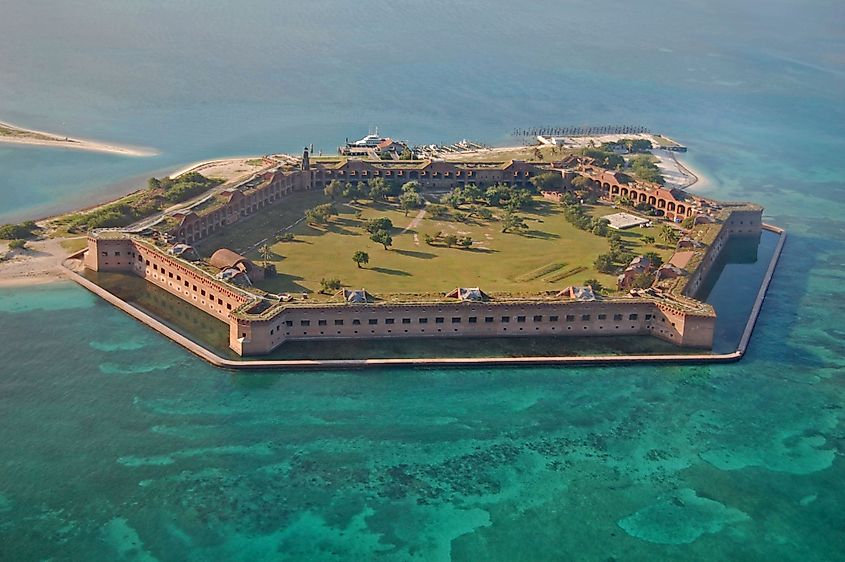
The Spanish explorer Juan Ponce de León was the first European to visit the Dry Tortugas on June 21, 1513. He caught about 160 sea turtles in the islands and therefore named the islands “Tortugas”. The islands eventually came to be known as “Dry Tortugas” due to the absence of fresh water on the islands. The Dry Tortugas Islands served as a significant American naval base starting from colonial times till the beginning of the 20th century. In 1822, the United States acquired Florida from Spain and the Dry Tortugas Islands were considered as a “strategic point” for controlling the Straits of Florida and the Gulf of Mexico. In 1825, a lighthouse was built on Garden Key and in 1856, a new and more powerful lighthouse was built on the Loggerhead Key. The construction of Fort Jefferson on the Garden Key began in 1847 and continued for the next 30 years but was never finished. During the American Civil War, the Jefferson Fort served as a military prison. In 1865, four men who were charged for their involvement in a conspiracy to assassinate President Abraham Lincoln were incarcerated in the Jefferson Fort. The US Army abandoned the fort in 1874 and the Dry Tortugas eventually became a coaling station for the US Navy ships. In 1908, the area became a wildlife refuge to protect the sooty tern rookery from the egg collectors. On January 4, 1935, President Franklin D. Roosevelt designated the 190.7 sq. km area as “Fort Jefferson National Monument”. In 1983, the area of the national monument was expanded and on October 26, 1992, the area was redesignated as the Dry Tortugas National Park.
